The half timbered triple gabled Bell Hotel is directly opposite the Gage Gates of Tewkesbury Abbey. The date 1696 is inscribed over the front door of the hotel. Amongst other period features in the Bell are decorative wooden panels, which are thought to have once been pews in the Abbey. The wooden panelling is identical to those displayed in the town museum. The inn was originally known as the Angel and later became the Bell & Bowling Green Hotel (1830 Pigots Directory and 1891 & 1903 licensing books). The inn’s bowling green was once a great attraction. In 1886 it was reported that as many as 200 people and a military band congregated on the bowling green. Tewkesbury bowls club started at the Bell Hotel in 1928 before moving to their present home in Gander Lane in 1975. Surrounding the green was an old yew hedge, some fifteen feet high, which shielded the bowlers from the strong south westerly winds that often blew in from the Ham. Sadly houses were built on the bowling green in 1984.
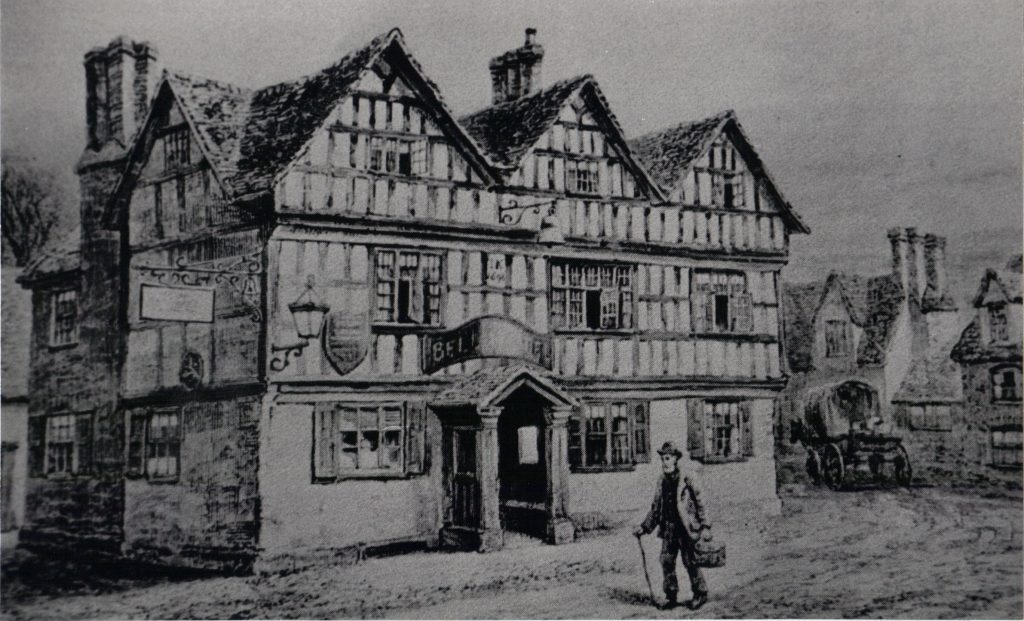
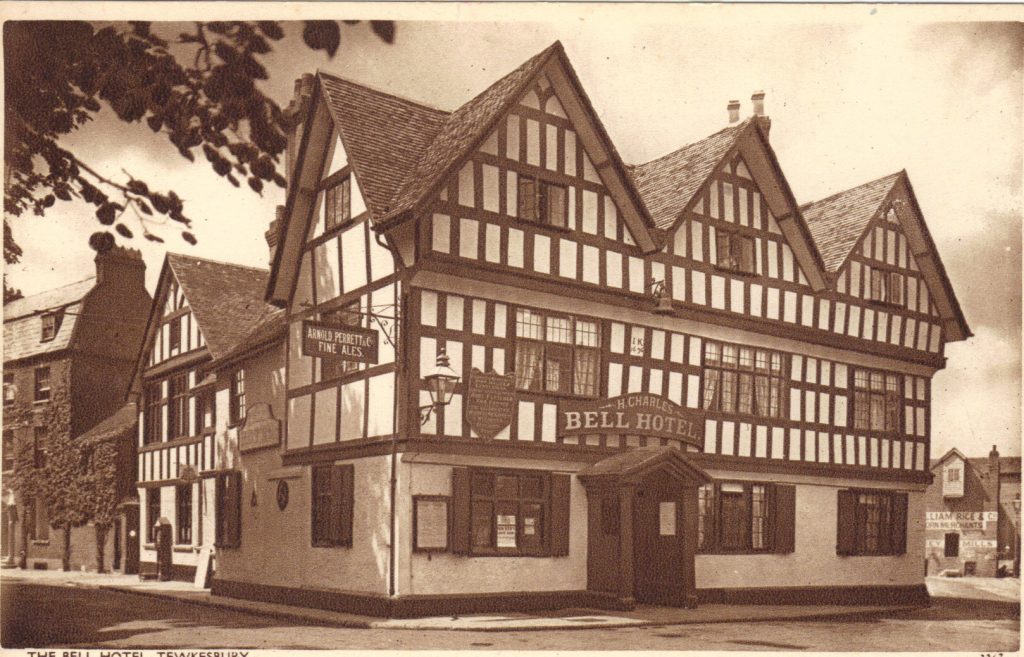
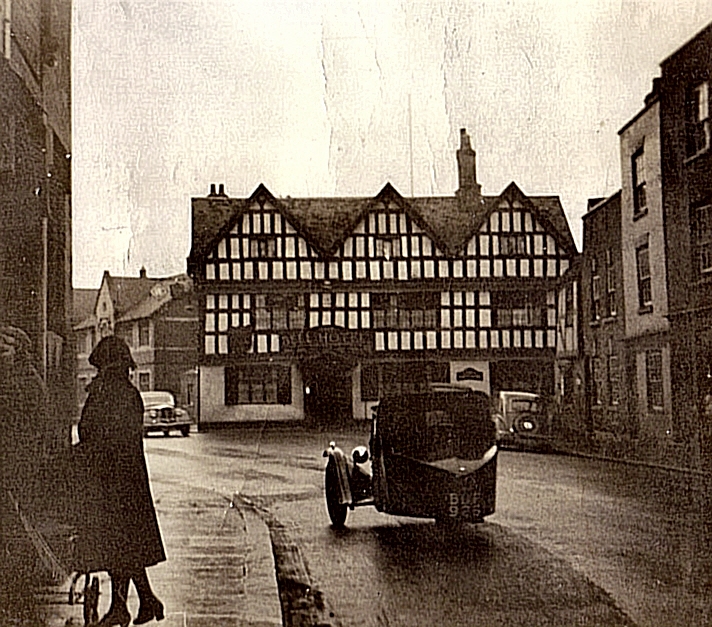
The Bell Hotel had a lucky escape in 1921 when fire ripped through the roof but the building was saved. History nearly repeated itself in January 2008 when a fire burnt out of control in the pubs chimney. Newspapers had been set alight on top of the burning wooden logs. Smoke could be seen billowing out of the chimney into the night sky. The bar was damaged by smoke. Fire crews spent most of the evening dousing down the fire but, luckily, the building was mostly undamaged.
The booklet ‘Gloucestershire Inns’, published in 1924, states that ‘The Bell is mentioned in ‘John Halifax, Gentleman’, as the residence of Abel Fletcher, the stiff necked tanner. The fine bowling green connected with the hotel is also mentioned in the same novel. The house is a charming example of the best Elizabethan Architecture.’
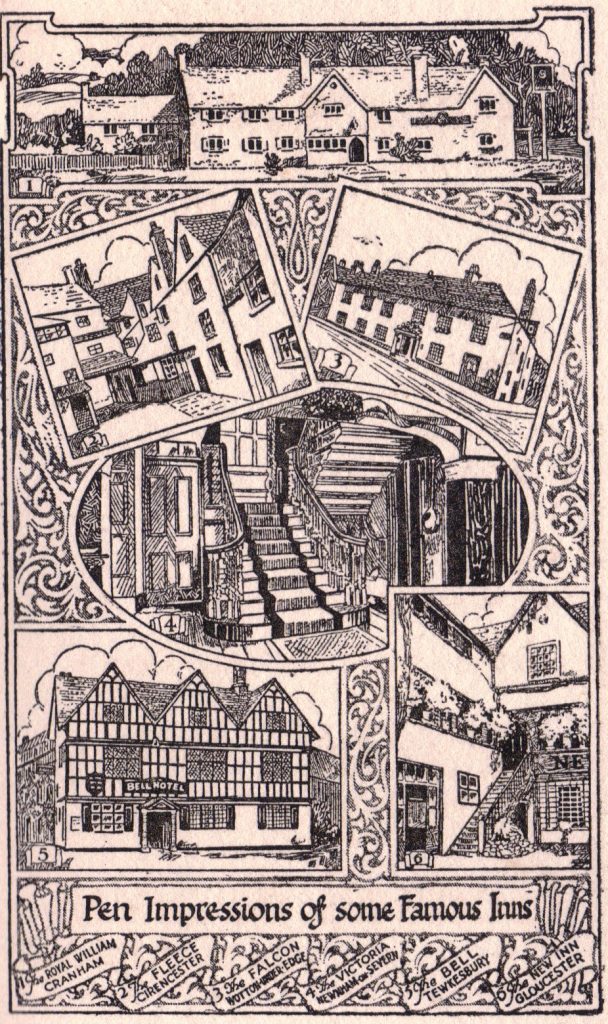
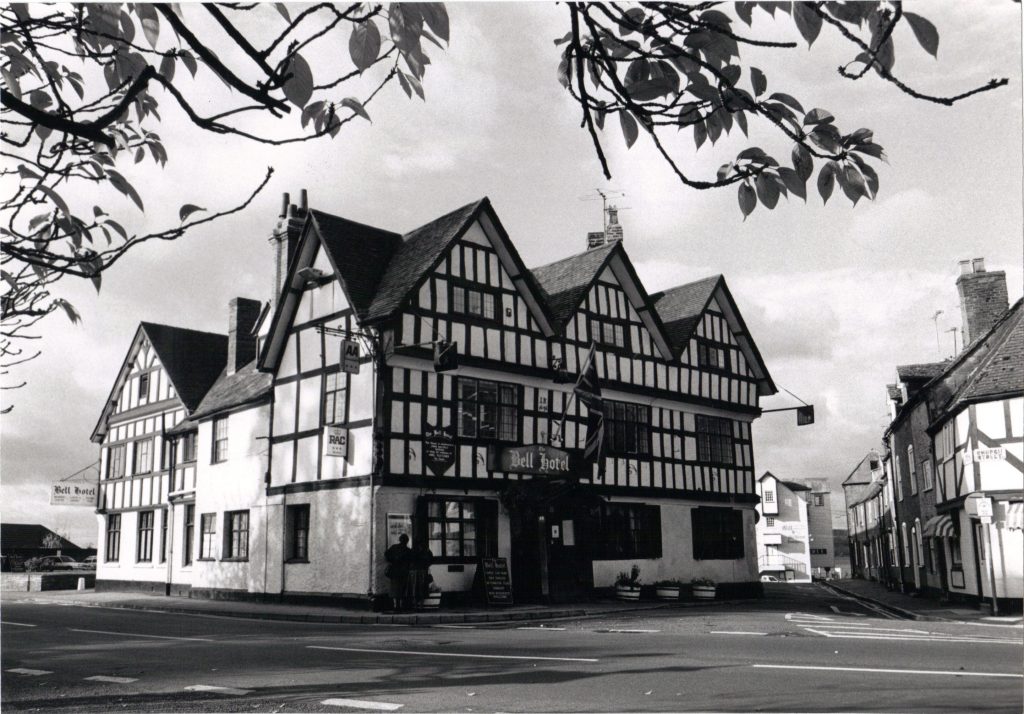
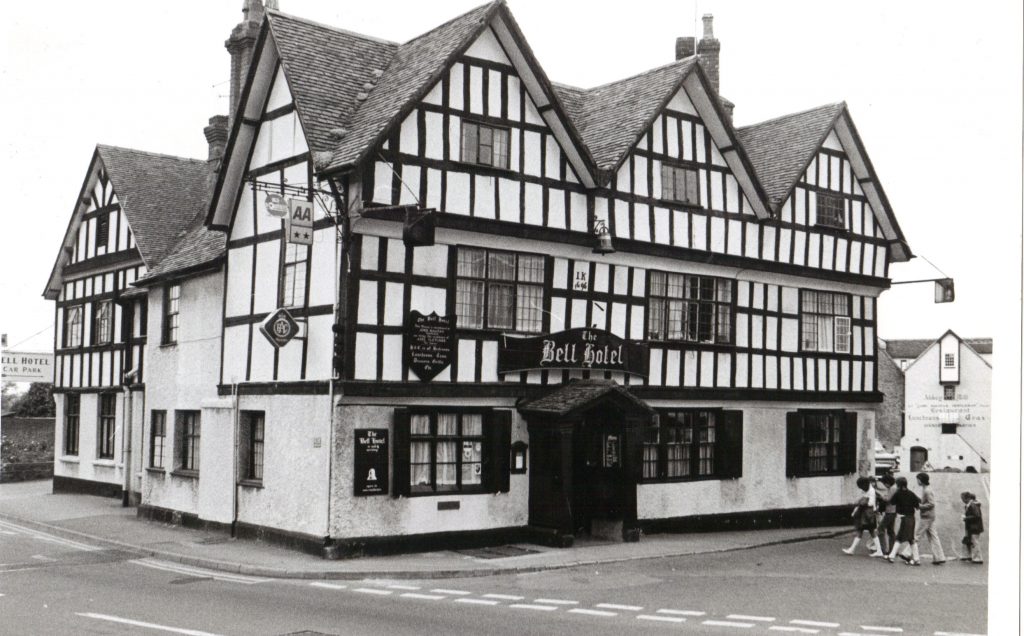
The Citizen, 2nd August 1985 – Hotel to change hands: The Bell Hotel, a Grade II listed building in Tewkesbury is being bought by a newly formed management company. Managing director of the new firm, Mr Roger Brown (42) said: “The Bell offers just the right combination of size, site and reputation. It already has a good local clientele and there are definite prospects for new business in the future. This is the first of our acquisitions, made after investigating a lot of possible hotels. Now we intend to look for more, building up our own group over the next five years.”
The management company is being backed by the world’s largest source of venture capital, Investors in Industry plc, known as 3i. The 3i finance for the project totals £500,000 which is a combination of equity and long term loan. “Our 20 per cent shareholding in the new company is a good measure of our faith in its future potential,” said Stephen Denford of 3i.
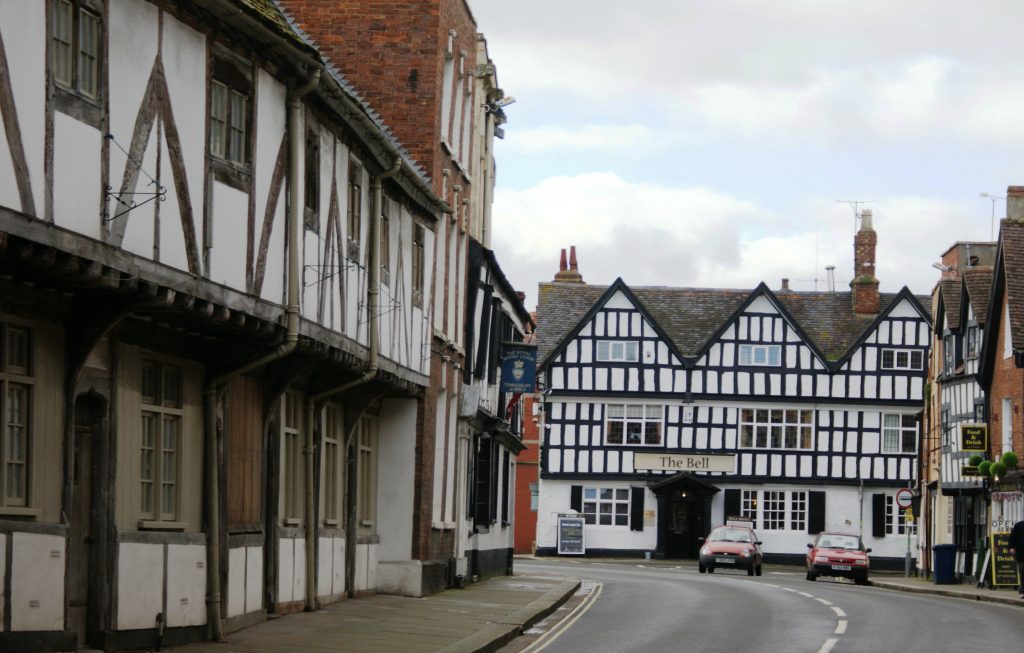
The Bell Hotel [researched in 2008] is part of the Old English Pub Company (Greene King) and boasts 25 bedrooms all with private bathrooms.
The Bell Hotel is reputedly haunted by the ghost of an elderly gentleman in a top hat and coaching coat. He has been seen in the lounge bar sitting at a table awaiting service. When asked by the staff what he wants he mysteriously disappears. An old portrait once hung on the wall of the Bell Hotel depicting a gentleman with the same characteristics. However, since the painting has been removed the ghost of the old man has not made an appearance.
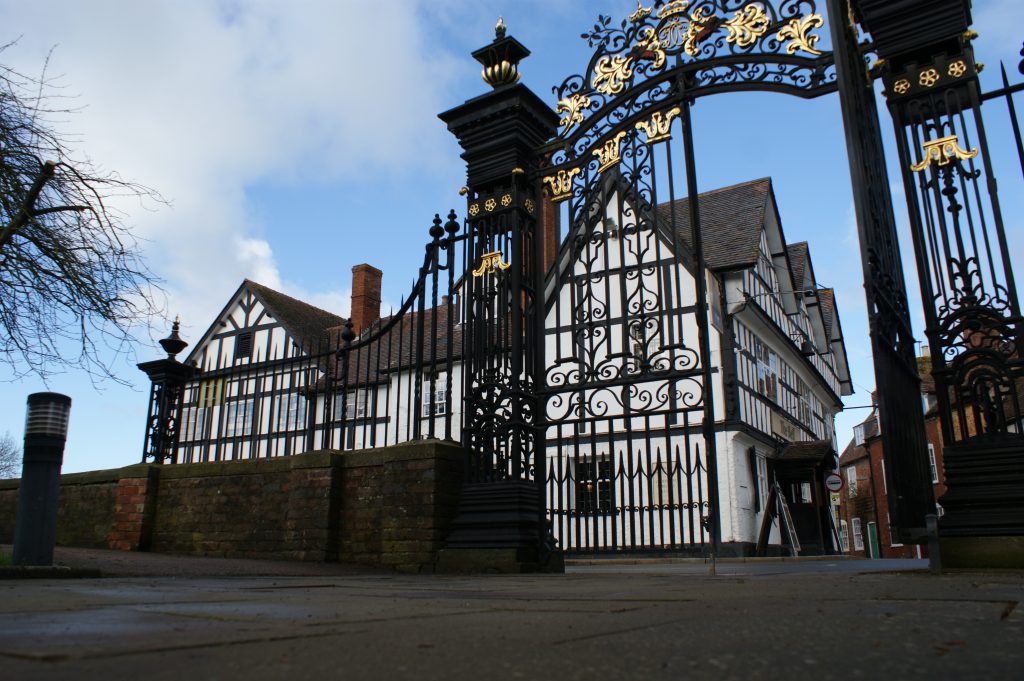

Gloucestershire Echo, 8th September 2017 – Five arrested after burglary report: Five people were arrested in Tewkesbury in the early hours of yesterday, following a report of a burglary in progress at the Bell Hotel in Church Street. Gloucestershire police said that shortly before 3.20am a member of the public spotted two people coming up from the hotel cellar and head towards the town centre carrying boxes of alcohol.
Officers attended and arrested five people on suspicion of burglary and recovered property which is believed to have been stolen. Two women, aged 20 and 21, a 20-year-old man, a 16-year old boy and a 16-year-old girl were in police custody in connection with the incident.
From ‘Tewkesbury Pubs’ by B.R. Linnell (1972, second edition 1996)
Originally the ‘Angel’ it may have been briefly the ‘Ring of Bells’ c.1800.
[The Bell Hotel] looks like a coaching inn, all 17th century timbers and gables, although today a very large part of it is 19th/20th century. Above the front portico is a bell denoting the name of the inn. above it, embossed on the wall, are the initials “I.K.” and the date 1696. The meaning of both are lost. The initials may refer to Isaac Kenelm or Kemble. The date, which coincided with the demolition of the ‘Bull Inn’ in the Crescent may refer to the time of renovation and opening of a new inn here, for in those days the Bull and the Bell were linked by a continuous row of cottages with the main road running down Mill Street. It was a very good spot for an inn. On one of the interior walls of what was a snug little bar there was a large carving of the Royal Arms with “On a bend sinister azure three anchors sable”. Added to the date 1696 could there have been the arms of William Orange? It all disappeared when the wall was removed to incorporate the bar into a new dining area. By luck another interior wall was preserved and now forms part of the dining rom. On it is a large area of medieval stencilling in blue. As this has been given a date in the 13th century the Bell has clearly a longer history than 1696. A clue may be found in the fact that the entire row mentioned above belonged to the monastery but at the Dissolution in 1541 none of them were listed for destruction or retention, the inference being that they were otherwise owned. The Bell could have been any one of the unplaced pubs prior to 1700.
The success of the book “John Halifax, Gentleman” by the Victorian novelist Mrs. Craik has ensured wide recognition for the Bell. It has featured in at least three films, many postcards and one highly sought after ceramic model.
Over the years the public bar trade has fallen off. Fifty years ago the long bar, parallel to Mill Street, once a skittle alley, was a popular haunt for anglers. This was incorporated into the restaurant c.1970. Soon afterwards the small cocktail bar was taken away. Both were replaced by a single bar in what is now the main dining room. Also in the 1980’s part of the car park was enclosed by a two storey dormitory extension, forming a quadrangle used at times as a beer garden. This had been made possible by the demolition of the old Grammar School.
In 1973 strife between the owner of the hotel and the tenants of the bowling green led to the loss of a significant part of the towns history. Virtually overnight the club was banished from its H.Q. of over sixty years after declining to meet with an exorbitant rent rise, a sum impossible to meet, it was said. It therefore seems a little odd that they immediately took up the offer of a new green and clubhouse at a rental far in excess of the one they couldn’t possibly afford for the Bell Green. As for the old green, planning permission for a bungalow for the use of the hotel owner in his retirement was soon talked up into a row of houses. The story is interesting, and suffice to say that 500 years of history meant nothing in the face of pounds stirling.
During the days of the great regattas the green was the site for the Regatta Ball. Up and over steps linked to the Victoria Pleasure Gardens and river, making a truly romantic setting. The last of these was held in 1921.
In 1854 the Bell was sold for £920. In 1992 the price was said to be £500,000.
Licensing Details:
Owner in 1891: Tewkesbury Brewery
Rateable value in 1891: £64.0s.0d.
Type of licence in 1891: Alehouse
Owner in 1903: Arnold Perrett & Co. Ltd., Wickwar Brewery
Rateable value in 1903: £100.0s.0d.
Type of licence in 1903: Alehouse / Full
Closing time in 1903: 11pm
Owner in 2008: Greene King (Old English Inns)
Landlords at the Bell Hotel include:
1774-1797 John Founes
1793-1813 John Brown
1813-1820 Richard Blakeway
1820,1822 Bramwell Whitmore
1830 Edward Causon
1831 A.H. Bowers
1831-1852 George Gardner
1852 Jane Lane (widow)
1852-1854 John Dufour
1854,1856 Miss M.A. Clarke
1858 William Boulter
1858-1866 Benjamin Treeton
1866 Charlotte Firkins
1866-1879 Annie Bateman
1885,1889 Robert Robson
1889-1891 Annie and Ada Pope
1891-1898 Edward Watton
1898-1902 W.J. Evans
1902-1914 Harry Charles
1914-1919 John Thomas Platts
1919-1927 Albert Henry Bowers
1927-1937 Sidney Thomas Freeman
1937-1939 Robert Meyer
1939-1945 Reginald A. Gaze
1945-1948 Ronald Edward Rutland
1948 Bernard Lawson
1953 Robert Gray
1953 Dennis Cattan
1960-1968 Michael P. Gallagher
1968-1969 W. Locke
1969-1970 M. Ostler
1970 -1974 Thomas Robey
1974-1985 Eric Robey
1985-1992 Roger Brown
1992 Peter and Gill Hands

